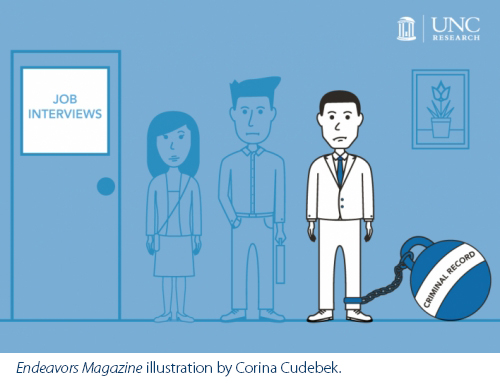Calculating the Consequences of Criminal Convictions
Endeavors Magazine, which highlights research and creative activity at UNC-Chapel Hill, has featured an article about faculty member John Rubin's research into the consequences of a criminal conviction and C-CAT (Collatoral Consequences Assessment Tool) in its September 12 issue. Below is an excerpt.
When Daryl Atkinson walked out of prison on Nov. 4, 1999, he was ready to start his new life. After three- and- a- half years in prison, including a stint of solitary confinement, he knew he wanted to become a lawyer. Even though his sentence was behind him, Atkinson quickly discovered that the consequences of his criminal record were not. His driver license was suspended. He couldn’t apply for federal financial aid. His college applications were rejected. To this day, despite years of award-winning work—including being honored by the White House—Atkinson cannot vote in his home state of Alabama.
“With a lot of criminal cases, people are pretty good at understanding the direct criminal punishment,” John Rubin, a criminal conviction expert at the UNC School of Government, says. “You’re looking at a misdemeanor or a felony, jail time, probation, fines—but what is not well-known are the consequences that remain after the criminal punishment.”
Despite tremendous hurdles after his release from prison, Atkinson accomplished his goal—he is now the senior staff attorney at the Southern Coalition for Social Justice, and a zealous advocate for giving people with criminal records a second chance. “To really improve the criminal justice system as a whole, we need a tool that gives people the full ramifications of contact with the system,” he says.
In collaboration with Rubin and the UNC School of Government, Atkinson has worked tirelessly on making that tool a reality.
Read more.
Published September 15, 2016



